Roden 1/32 SE.5a (Hispano)
|
KIT #: |
602 |
|
PRICE: |
$59.95 MSRP
|
|
DECALS: |
Four options |
|
REVIEWER: |
Tom Cleaver |
|
NOTES: |
|
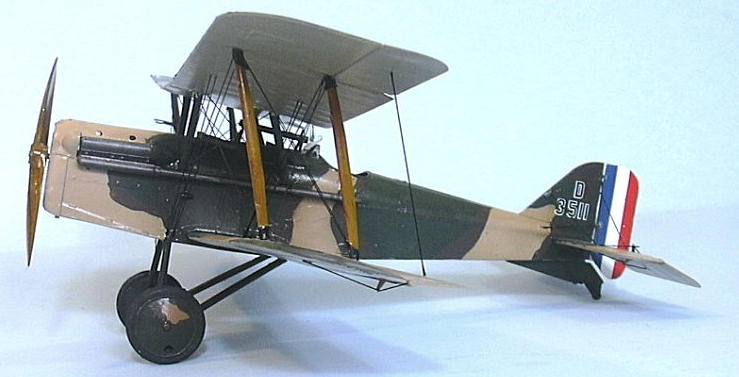
If the Sopwith Camel was the "Spitfire" of the First
World
War, the Royal Aircraft Factory's S.E.5a was the "Hurricane" of
that conflict. Two more different responses to the same need
could not be imagined, other than that of the Spitfire and
Hurricane.
While the delicate Camel was tricky and
temperamental, and ofttimes dangerous to the less‑experienced of
its pilots, the rugged S.E.5a was stable and predictable.
H.P. Folland, the Chief Designer of the Royal Aircraft
Factory, had been working through several "Scout, Experimental"
designs, all of which were far more influenced by the German
Albatros than they were by the French Nieuport ‑ the two fighters
of 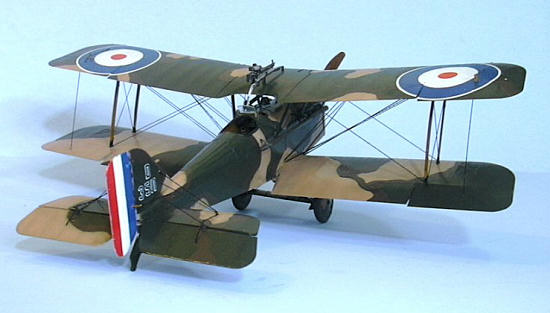 the
first part of the war that set the two different standards
of fighter type aircraft, one solid and speedy, the other light
and highly maneuverable.
Folland went on after the war, as Chief
Designer of the Gloucestershire Aircraft Company (shortened soon
to Gloster) to design all the fighters used by the RAF that were
not designed by Sidney Camm at Hawkers before the Spitfire, and ended
his career in the 1950s with the Folland Gnat, his answer to the size‑and‑weight
spiral of the jet fighter, and a serious attempt to return to the kind of
fighter he had designed at the outset of his career.
the
first part of the war that set the two different standards
of fighter type aircraft, one solid and speedy, the other light
and highly maneuverable.
Folland went on after the war, as Chief
Designer of the Gloucestershire Aircraft Company (shortened soon
to Gloster) to design all the fighters used by the RAF that were
not designed by Sidney Camm at Hawkers before the Spitfire, and ended
his career in the 1950s with the Folland Gnat, his answer to the size‑and‑weight
spiral of the jet fighter, and a serious attempt to return to the kind of
fighter he had designed at the outset of his career.
The S.E.5, which began to appear in the squadrons on the
Western Front in the Spring of 1917, was at first unsuccessful. Powered
by the 180 h.p. Hispano‑Suiza, it basically didn't haveenough get‑up‑and‑go to
meet the Albatros on an equal if not
superior footing.
Re‑engined with the 200 h.p. geared Hispano
and redesignated S.E.5a, the airplane found greater acceptance that
summer in the hands of such aces as James McCudden, Billy
Bishop, and Mick Mannock, to name but a few.
That September,
pilots of 56 Squadron, under the leadership of McCudden, fought
an epic battle with a single Fokker triplane flown by Werner
Voss; though the Fokker could literally fly rings around the
S.E.5a, not even Voss could outfly eight other aces at once, and
it proved to be his final battle.
During the war, the S.E.5a was powered by the 200 h.p.
geared Hispano‑Suiza, and the direct‑drive 200 h.p. WolseleyViper, with
the Viper being used on the majority of the aircraft produced in 1918.
Without the torque‑inducing rotary of the Camel, and
with a high degree of dihedral in the design, the
S.E.5a was never the dogfighter the Camel was, but it was a more
stable gun platform; by 1918, most successful aces had realized
that an ambush of the unwary was preferable to the
unpredictability of a dogfight, so a fighter that could dive
under good control and allow for a well‑aimed burst provided many
British pilots with an increase in their scores.
The same was
true of the French SPAD, which shared many similar characteristics with
the S.E.5a as regards ruggedness.
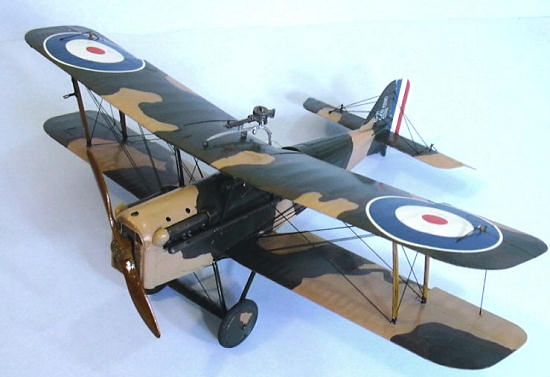 The S.E.5a also served in Mesopotamia, Palestine and
Macedonia during the war, with the air forces of Great Britain,
Australia and the United States, where it was used by both the
United States Army and Navy.
The S.E.5a also served in Mesopotamia, Palestine and
Macedonia during the war, with the air forces of Great Britain,
Australia and the United States, where it was used by both the
United States Army and Navy.
Roderick Stanley Dallas:
Roderick Dallas, the second-ranked Australian ace of the
Great War, was born in Queensland in 1891.
After moving with his family to New South Wales in 1898,
he finished school and joined the assay office of the Mount Morgan Gold Mining
Co., to support his studies of chemistry and technical drawing at the technical
college.
He became a sergeant in the school cadet corps and was later a
lieutenant in the Mount Morgan Company of the 3rd (Port Curtis) Infantry
Battalion. A typically-athletic Australian of his generation, he loved
gymnastics, Rugby Union and amateur theatricals.
Dallas had been interested in aviation at an early age,
and when the American aviator Arthur Burr Stone carried out the first powered
flight in Queensland, Dallas was a witness.
He built an unsuccessful glider and a seaplane that was
lost in the sea during tests.
Dallas was one of those men who neither drank, smoked
nor swore, and was quiet-spoken.
He paid his way to England in 1915, but was unable to
join the royal Flying Corps.
Through the advice of Australian aviator Sydney Pickles,
he got into the Royal Naval air Service and won pilot’s license No. 1512 on
August 15, 1915.
By late 1915, Dallas was a Flight sub-Lieutenant in 1
Squadron, RNAS, flying Sopwith Pups.
He experienced his first combat in December 1915 and
scored his first victory in May 1916. Winning the distinguished Service Cross
for this action.
In early 1917, Dallas began flying the Sopwith Triplane, with
which his score climbed.
In April 1917, in company with another pilot, he
attacked 14 enemy planes at 18,000 ft. and engaged in a 45-minute dogfight in
which the two Triplanes shot down three Albatrosses and forced the others to
retreat.
He began flying the Sopwith Camel in August 1917. Promoted to Lieutenant
Commander that November, Dallas assumed command of 1 Squadron RNAS in December.
By March 1918 his score stood at 30 victories.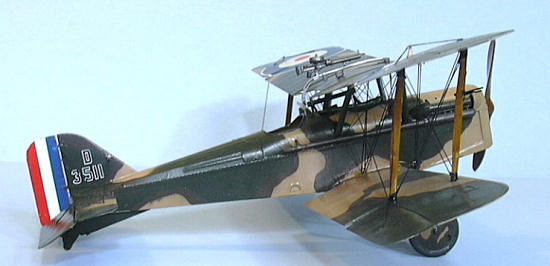
Following the formation of the
Royal Air Force, Dallas became a Major and took command of 40 Squadron, equipped
with the S.e.5a.
Due to his naval background, the men in the squadron called him
“The Admiral.” Over the next two months, Dallas scored nine more victories in
the S.E.5a.
While Dallas was a fearsome fighter, an instructional
booklet he wrote made it clear he did not think that impetuousness was
synonymous with aggressiveness. A strong leader of younger fliers, he taught his
pilots of the vital need to search the sky thoroughly and frequently used his
skill to protect inexperienced pilots.
On June 1, 1918, while on patrol near Liévin, Dallas
once again went to the assistance of one of his young pilots, despite the fact
that several Germans were in positions of advantage.
As he dove to attack, he was attacked in turn by three
Fokker triplanes and shot down in flames.
At his death, he was the 16th-ranked
Allied ace, and second to R. A. Little among the Australians.
Roden has produced a second 1/32 S.E.5a to accompany kit
601, the Wolsey-Viper S.E.5a released six months ago.
As with the earlier kit, this is a scale-up of their
excellent 1/48 kit.
The wings and tail surfaces are thin as they should be,
with excellent fabric detail.
The Hispano-Suiza engine is a model in itself, and a
very effective display could be made of an S.E.5a undergoing engine work with
only a little addition of detail like spark plug wiring.
The cockpit i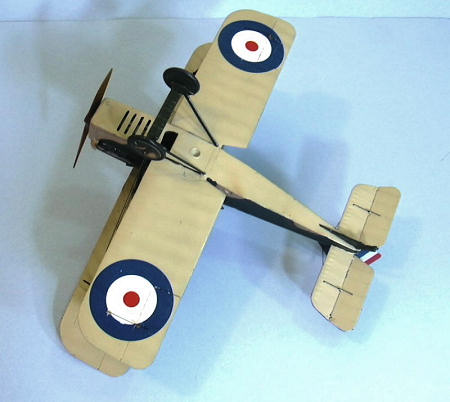 s
as simple as the original, and will look very good with the addition of Eduard’s
photoetch 1/32 WW1 Sutton Harness.
Decals are provided for four different aircraft, of
which the best-known is that flown by Major R.S. Dallas of 40 Squadron, which
was field-camouflaged in tan and dark green over the standard P.C.10 finish.
s
as simple as the original, and will look very good with the addition of Eduard’s
photoetch 1/32 WW1 Sutton Harness.
Decals are provided for four different aircraft, of
which the best-known is that flown by Major R.S. Dallas of 40 Squadron, which
was field-camouflaged in tan and dark green over the standard P.C.10 finish.
This kit is not as fiddly as the Albatros series are,
since there is less interior structure to worry about, and since the engine is
completely cowled.
Since I was not going to display the engine compartment
open, I only assembled the major parts of the Hispano-Suiza.
The cockpit was painted with Tamiya “Buff” for the
fabric, and my “Yew” brown color, with Tamiya “Clear Yellow” over for the wood
parts.
I used an Eduard 1/32 photoetch WW1-style Sutton Harness to set things
off in the cockpit.
Past that, assembly was easy.
I left off the rudder so I would be able to later apply
the stripe decals.
The ailerons and elevators were posed dynamically.
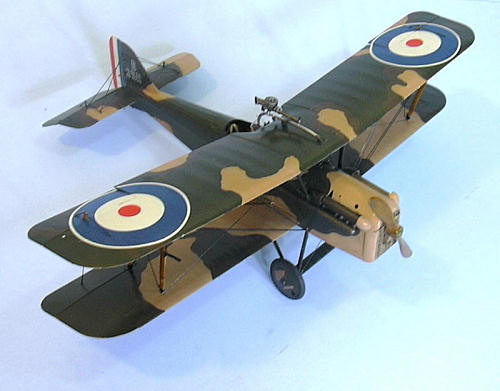 The lower surfaces were painted with Tamiya “Buff,” and
the upper surface with Xtracrylix “RAF Dark Green” which is as good as any for
P.C.10, a “color” that could range from dark green to chocolate brown, depending
on which company made which batch.
I then masked off the dark green and applied Tamiya
“Light Earth” and “Dark Green” for the field-applied camouflage, following the
profile painting instructions in the kit.
The lower surfaces were painted with Tamiya “Buff,” and
the upper surface with Xtracrylix “RAF Dark Green” which is as good as any for
P.C.10, a “color” that could range from dark green to chocolate brown, depending
on which company made which batch.
I then masked off the dark green and applied Tamiya
“Light Earth” and “Dark Green” for the field-applied camouflage, following the
profile painting instructions in the kit.
The kit decals went down without a problem under a
couple applications of Micro-sol.
The S.E.5a is a British “birdcage,” with doubled flying
wires, which makes it a bit of a challenge for a modeler doing a first biplane
model.
I used .010 wire, painted black for effect. The wiring diagram in the
kit instructions gives you all the information needed, and the only other
requirement is patience.
Roden’s S.E.5a is a welcome addition to 1/32 First World
War models and looks very good sitting next to THE Roden Nieuport 28 and
Hobbycraft’s Camel and SPAD XIII.
The kit is quite simple to build out of the box and
looks good when finished with only a bit of extra detail like seatbelts.
Rigging is more complicated, but nothing that cannot be
accomplished with patience and concentration.
Highly recommended.
Thanks to Roden for the
review kit.
Copyright ModelingMadness.com. All rights reserved. No reproduction in any form without express permission from the editor.
Tom Cleaver
October 2008
If you would like your product reviewed fairly and quickly, please
contact the editor or see other details in the
Note to
Contributors.
Back to the Main Page
Back to the Review
Index Page 2025


 the
first part of the war that set the two different standards
the
first part of the war that set the two different standards


